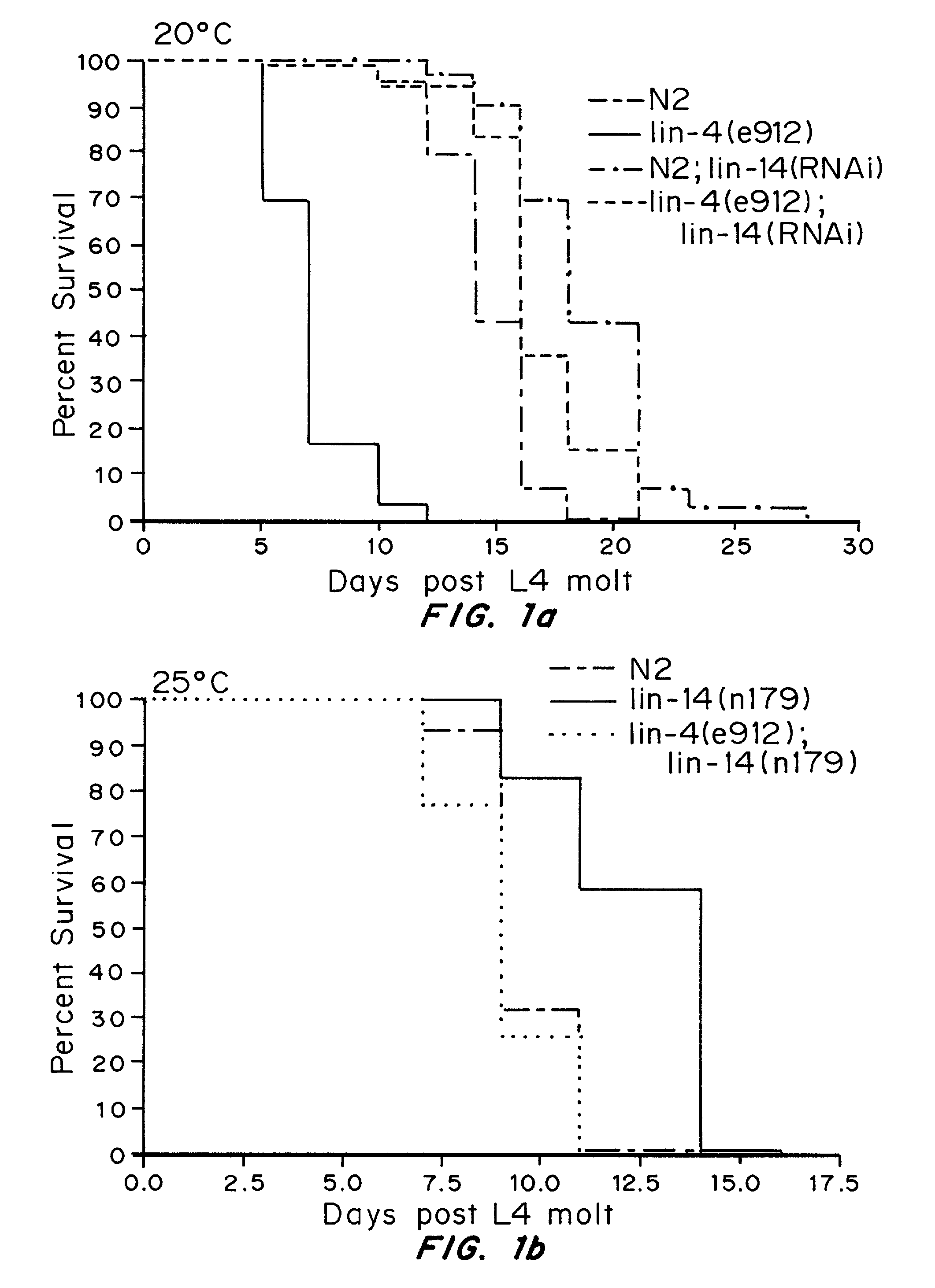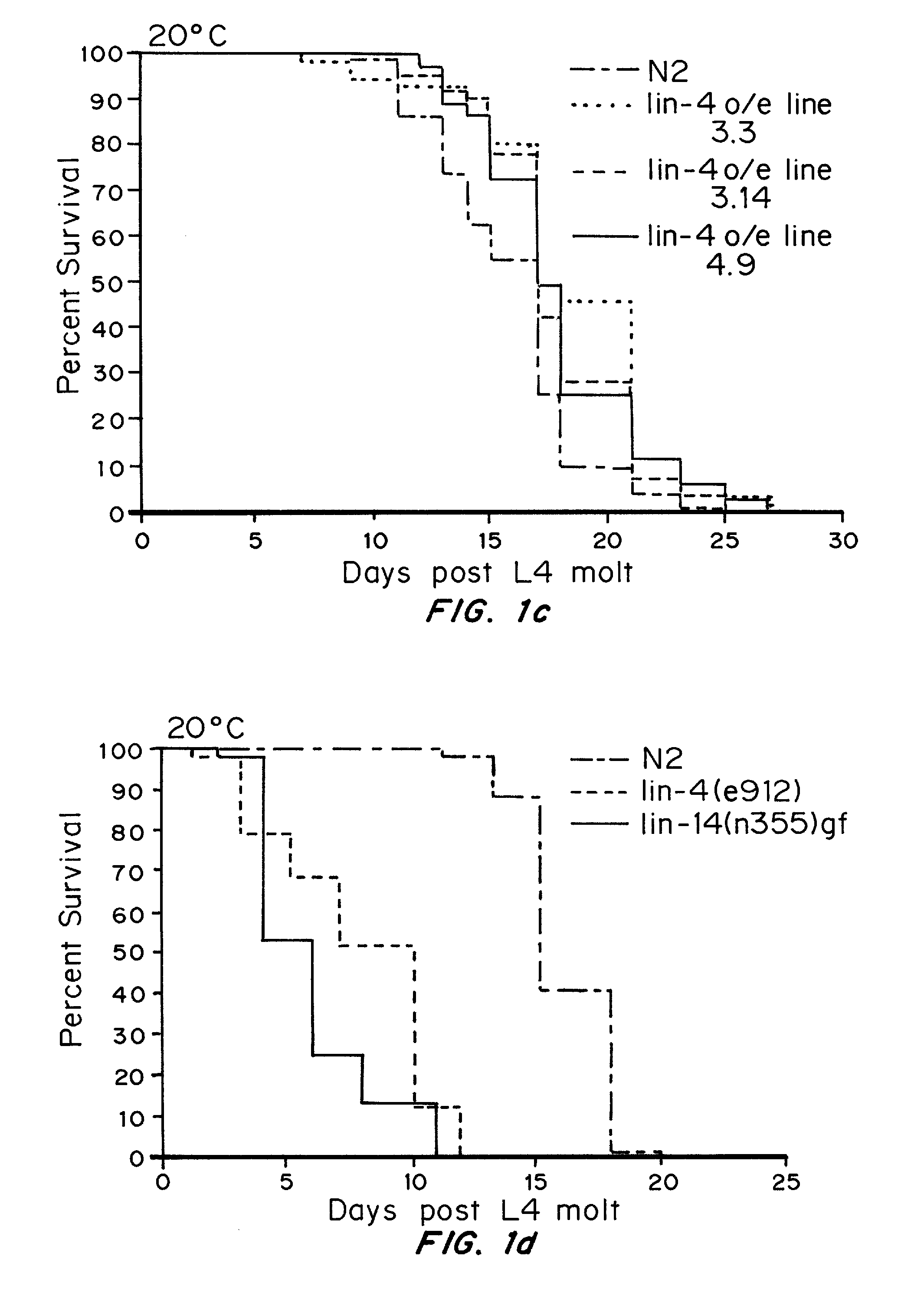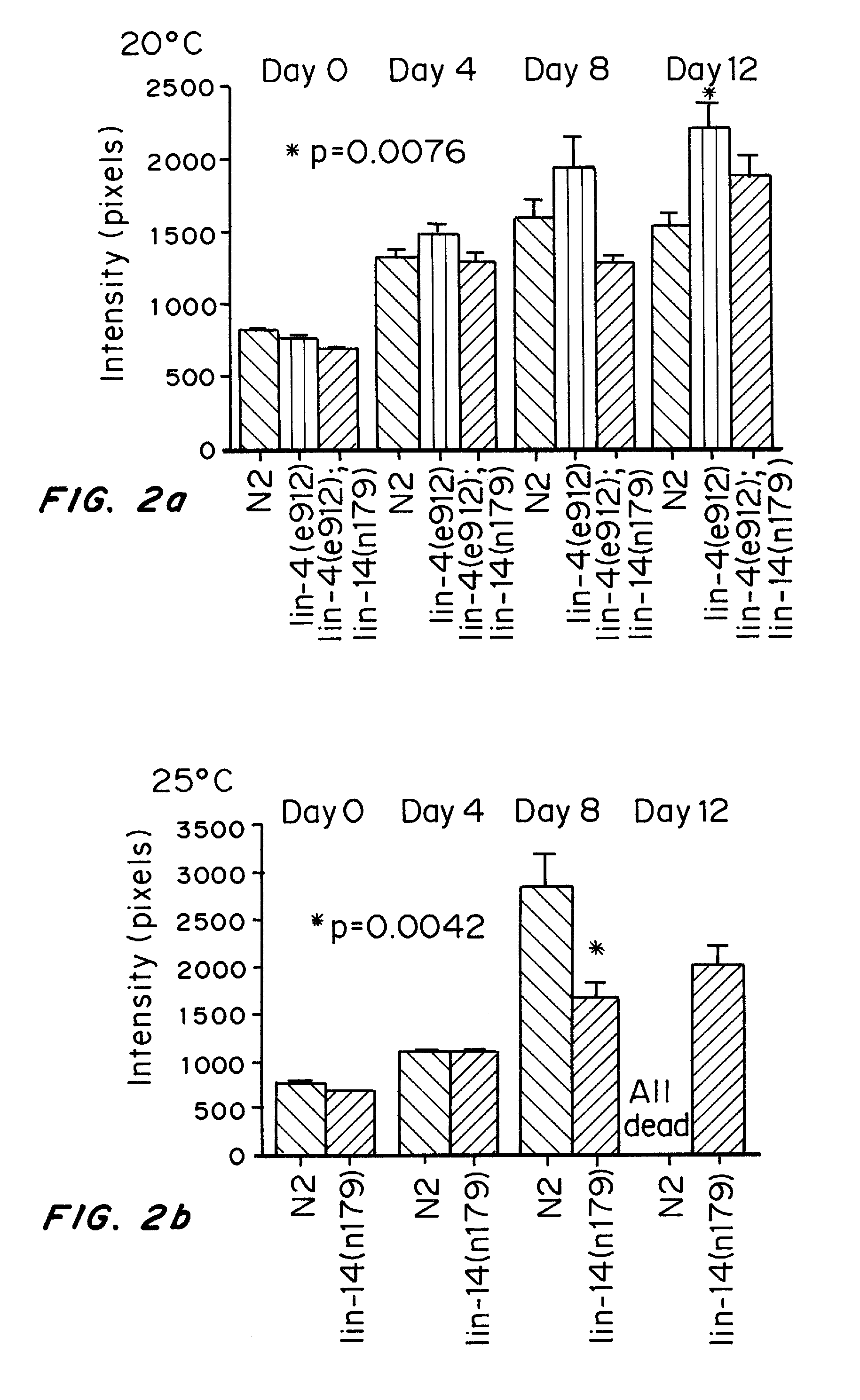Anti-aging micrornas
a micrornas and anti-aging technology, applied in the field of anti-aging micrornas, can solve the problems that the global genetic pattern required for lifespan determination has not yet been completely defined, and achieve the effects of reducing the risk of aging
- Summary
- Abstract
- Description
- Claims
- Application Information
AI Technical Summary
Benefits of technology
Problems solved by technology
Method used
Image
Examples
example 1
lin-4 and lin-14 Mutants have Opposite Lifespan Phenotypes
[0163] Heterochronic C. elegans mutants were assayed for lifespan length. Mutations in lin-4 and lin-14 resulted in aging defects. Animals with a loss-of-function (lf) mutation in lin-4 displayed a lifespan that was significantly shorter than wildtype (FIG. 1A), suggesting that lin-4 is required to prevent premature death. Conversely, overexpressing lin-4 from an extrachromosomal array led to a lengthened lifespan (FIG. 1C). This result demonstrates that the lin-4(lf) mutant did not die prematurely solely due to an unrelated, general pathology, but rather than lin-4 functions to extend lifespan. Consistent with the lin-4 data, a lf mutation in the putative target of lin-4, lin-14, caused the opposite lifespan phenotype. Animals carrying a temperature sensitive lf mutation in lin-14 had a 31% longer lifespan than wildtype (FIG. 1B). The longevity phenotype produced by the lin-14(lf) lesion was reproduced by RNA interference (...
example 2
lin-4(lf) Short Lifespan is Due to Accelerated Aging
[0164] To determine whether the lin-4(lf) short lifespan is due to accelerated aging or to an unrelated, pleiotropic cause, accumulation of intestinal autofluorescence in adult animals was monitored. Intestinal autofluorescence, which is caused by lysosomal deposits of lipofuscin, accumulates over time in the aging worm and is an established marker for aging (Garigan, D. et al., (2002) Genetics 161, 1101). In agreement with its short lifespan, the lin-4(lf) mutant accumulated intestinal autofluorescence more rapidly than wildtype (FIGS. 2A and B). These results resemble those found for the short-lived strain with a daf-16(lf) mutation (FIG. 5B). daf-16 encodes a FOXO transcription factor that regulates lifespan through insulin-like signaling. The premature lipofuscin accumulation caused by lin-4(lf) was suppressed when combined with the lin-14(n179)lf lesion (FIG. 2A), consistent with the ability of lin-14(lf) to suppress the shor...
example 3
The Lifespan Extension of a lin-14(lf) Mutant is hsf-1 Dependent
[0165]C. elegans mutants that display lifespan phenotypes also display altered responses to stress treatments, including heat shock. For instance, the long-lived daf-2(lf) mutant is highly tolerant to heat shock, and this heightened stress resistance is believed to be essential for lifespan extension. FIG. 6A shows survival of lin-14(n179ts) mutants on control bacteria and lin-14(n179ts) on hsf-1(RNAi) bacteria both cultured at 25° C. The data show that the lifespan extension of lin-14(lf) mutant is hsf-1 dependent.
[0166] Two-day old adult lin-4(e912) and lin-14(n179ts) were cultured at 20° C. and transferred to 35° C. The animals were scored ten hours after treatment. At least 50 worms were tested for each strain. In accordance with its lifespan phenotype, the lin-4(e912)lf mutant displayed a greater sensitivity to heat shock as compared to wildtype (FIG. 6B), whereas the lin-14(n179)lf mutant displayed a greater res...
PUM
| Property | Measurement | Unit |
|---|---|---|
| Length | aaaaa | aaaaa |
| Pressure | aaaaa | aaaaa |
| Inhibition | aaaaa | aaaaa |
Abstract
Description
Claims
Application Information
 Login to View More
Login to View More - R&D
- Intellectual Property
- Life Sciences
- Materials
- Tech Scout
- Unparalleled Data Quality
- Higher Quality Content
- 60% Fewer Hallucinations
Browse by: Latest US Patents, China's latest patents, Technical Efficacy Thesaurus, Application Domain, Technology Topic, Popular Technical Reports.
© 2025 PatSnap. All rights reserved.Legal|Privacy policy|Modern Slavery Act Transparency Statement|Sitemap|About US| Contact US: help@patsnap.com



